By: Dominick L. Flarey, Ph.D, RN-BC, ANP-BC
Certified BioEnergetics Coach and Specialist
Board Certified Adult Nurse Practitioner
Board Certified Functional Medicine Practitioner
Over time, scientists have discovered that mitochondria play an vital role in cellular function and energy production. These organelles are often referred to as the powerhouses of the cell, as they convert nutrients into adenosine triphosphate (ATP), a vital energy currency. Inadequate mitochondrial function can lead to serious health issues, including metabolic disorders and chronic fatigue syndrome. Moreover, their involvement in apoptosis highlights their importance in cellular health and longevity. Understanding the role of mitochondria enriches knowledge about cellular biology and underscores the need for maintaining their optimal function.
Key Takeaways:
- Powerhouse: The mitochondria are often referred to as the ‘powerhouses’ of the cell because they generate the majority of a cell’s supply of adenosine triphosphate (ATP), which is used as a source of chemical energy.
- Metabolism: They play a vital role in metabolic processes, converting nutrients from food into energy. This involves the Krebs cycle and oxidative phosphorylation.
- Control of Apoptosis: Mitochondria are involved in regulating programmed cell death, or apoptosis, which is imperative for maintaining healthy cellular function and development.
- DNA: Mitochondria have their own circular DNA, distinct from the nuclear DNA, which allows them to replicate independently and produce some of their own proteins.
- Health Implications: Mitochondrial dysfunction is linked to various diseases, including metabolic disorders, neurodegenerative diseases, and aging, making them a significant focus of medical research.
1. Mitochondria generate ATP, the energy currency of cells. 2. Powerhouse of the cell, enabling numerous biological functions. 3. Mitochondrial DNA is inherited maternally, influencing heredity. 4. Regulate metabolism and maintain cellular health and balance. 5. Play roles in apoptosis, impacting cell life cycles. 6. Environmental factors can affect mitochondrial efficiency and function.

Overview of Mitochondria
 For many, mitochondria are simply known as the “powerhouses” of the cell, yet their significance extends far beyond energy production. He recognizes that mitochondria play a pivotal role in various cellular processes, including metabolism, apoptosis, and regulation of cellular metabolism. She sees these organelles as important to maintaining the cell’s health and functionality. They are involved in converting nutrients into adenosine triphosphate (ATP), the primary energy currency of the cell, allowing other cellular processes to occur efficiently.
For many, mitochondria are simply known as the “powerhouses” of the cell, yet their significance extends far beyond energy production. He recognizes that mitochondria play a pivotal role in various cellular processes, including metabolism, apoptosis, and regulation of cellular metabolism. She sees these organelles as important to maintaining the cell’s health and functionality. They are involved in converting nutrients into adenosine triphosphate (ATP), the primary energy currency of the cell, allowing other cellular processes to occur efficiently.
Definition and Role
About mitochondria, they are double-membraned organelles found in nearly all eukaryotic cells. He understands that these organelles are not only responsible for generating ATP through oxidative phosphorylation but also play a significant role in thermogenesis, cellular signaling, and the metabolic pathway of fatty acids. The proper functioning of mitochondria is vital for maintaining energy balance and overall cellular health.
Moreover, she acknowledges that mitochondria participate in programmed cell death, or apoptosis, by releasing cytochrome c, which activates pathways leading to cell death. They also produce reactive oxygen species (ROS) as byproducts of ATP synthesis, which play roles in signaling but can cause damage if left unchecked.
Structure of Mitochondria
At first glance, mitochondria exhibit a complex structure that contributes significantly to their function. He notes that each mitochondrion is enclosed by two membranes: the outer mitochondrial membrane, which is smooth and allows the passage of small molecules, and the inner mitochondrial membrane, which is highly folded into structures known as cristae. These cristae increase the surface area for biochemical reactions, playing a critical role in ATP production.
Plus, the space between the inner and outer membranes is called the intermembrane space, while the matrix, the innermost compartment of the mitochondrion, contains enzymes, mitochondrial DNA, and ribosomes. The unique structure of mitochondria allows them to perform multiple functions efficiently within the cell. They contain their own genetic material, which allows for the synthesis of some important proteins independently, highlighting their evolutionary importance and autonomy within eukaryotic cells.

Mitochondrial Function
To understand the vital role of mitochondria within cellular biology, one must examine the multiple functions they perform, principally their capacity to produce energy. Central to this energy production is the synthesis of adenosine triphosphate (ATP), the primary energy carrier in all living organisms. Mitochondria engage in a series of biochemical processes that convert nutrients into ATP, which cells use to fuel various activities such as muscle contraction, cell division, and even the maintenance of cellular structure.
ATP Production
Against the backdrop of cellular metabolism, mitochondria perform their most notable task of ATP generation through a process called oxidative phosphorylation. This complex system involves multiple steps, starting with the breakdown of glucose and fatty acids, which precedes the final phase of ATP synthesis. Mitochondria orchestrate this energy transformation through the electron transport chain, where electrons are transferred through a series of proteins embedded in the inner mitochondrial membrane, facilitating the pumping of protons into the intermembrane space.
The Krebs Cycle
Transfer of metabolic substrates into the Krebs cycle is vital, as it serves as a pivotal part of energy production. This cycle, also known as the citric acid cycle, operates within the mitochondrial matrix and uses acetyl-CoA generated from carbohydrates, fats, and proteins to produce electron carriers. These carriers, including NADH and FADH2, are imperative because they transport high-energy electrons to the electron transport chain, enabling further ATP production.
In addition to energy production, the Krebs cycle generates key byproducts that support numerous other metabolic pathways. Intermediates from this cycle play roles in synthesizing amino acids and fatty acids, demonstrating the interconnected nature of cellular metabolism. Mitochondria, therefore, are not merely energy converters; they serve as central hubs for various biochemical processes necessary for cellular health and function.
Electron Transport Chain
Enzymes within the electron transport chain are instrumental in the final steps of ATP production. As electrons are passed along the chain, they cause the transport of protons across the inner mitochondrial membrane, creating an electrochemical gradient. This gradient drives the synthesis of ATP via ATP synthase, a vital enzyme located in the same membrane. The efficiency of this process is key for maintaining adequate energy levels in cells.
It is important to highlight that dysfunction in the electron transport chain can lead to a myriad of health issues, such as mitochondrial diseases and degenerative disorders. A lack of efficiency in ATP production leads to energy deficits that can compromise cellular functions and contribute to conditions like muscle weakness and neurological deficits. Thus, understanding the function of mitochondria provides valuable insight into human health and the mechanisms of energy metabolism.

Mitochondrial Biogenesis
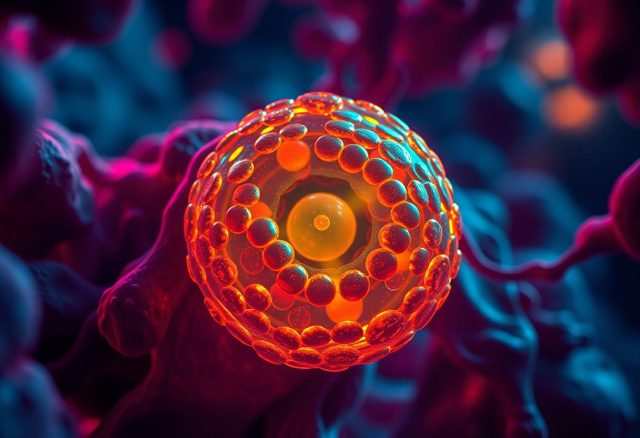 Unlike many cellular processes, mitochondrial biogenesis is a complex and dynamic mechanism that promotes the growth and division of mitochondria within cells. This process is crucial for maintaining adequate mitochondrial function and energy production, particularly in high-energy demanding tissues such as the heart and skeletal muscles. By increasing mitochondrial mass, cells can boost their capacity to generate ATP, the main energy carrier in cellular metabolism, enabling them to respond effectively to various physiological requirements.
Unlike many cellular processes, mitochondrial biogenesis is a complex and dynamic mechanism that promotes the growth and division of mitochondria within cells. This process is crucial for maintaining adequate mitochondrial function and energy production, particularly in high-energy demanding tissues such as the heart and skeletal muscles. By increasing mitochondrial mass, cells can boost their capacity to generate ATP, the main energy carrier in cellular metabolism, enabling them to respond effectively to various physiological requirements.
Definition and Importance
Above all, mitochondrial biogenesis refers to the process by which new mitochondria are formed within cells via the replication of pre-existing mitochondria and the assembly of mitochondrial components. This biological phenomenon is vital for cellular health, as it ensures a sufficient supply of energy and aids in the maintenance of a healthy cellular environment. Furthermore, the regulation of mitochondrial biogenesis is intricately tied to various metabolic processes, influencing overall metabolism, growth, and adaptation to stress in cells.
Additionally, the significance of mitochondrial biogenesis extends beyond mere energy production. Impairments in this process can lead to metabolic diseases, muscular dystrophies, and neurodegenerative disorders. Consequently, understanding mitochondrial biogenesis is of paramount importance for advancing health and developing therapeutic strategies for a spectrum of diseases.
Factors Influencing Biogenesis
Above all, multiple factors influence mitochondrial biogenesis, with some of the most significant including nutritional status, physical activity, and hormonal signals. These elements interact and modulate the signaling pathways that regulate mitochondrial growth and proliferation. For instance, regular exercise is known to stimulate mitochondrial biogenesis by enhancing the expression of key transcriptional coactivators, which in turn activate genes associated with mitochondrial replication and function.
- Nutritional status
- Physical activity
- Hormonal signals
Furthermore, research indicates that oxidative stress and levels of cellular energy can also influence this process. When cellular energy levels are low, the body may initiate biogenesis to compensate for the increased demand. Similarly, oxidative stress can serve as both a signal and a modulator for the biogenic process, highlighting the complex interplay between various cellular factors. Exercise, certain nutrients, and hormonal factors can enhance biogenesis while providing protective effects against oxidative damage.
- Oxidative stress
- Cellular energy
- Exercise
- Nutrients
Recognizing these factors provides insight into the ways lifestyle choices, dietary habits, and environmental influences play a role in promoting mitochondrial health, which is increasingly viewed as crucial for overall well-being.
Mitochondrial Dynamics
Keep in mind that the dynamics of mitochondria play a vital role in maintaining cellular energy metabolism and health. They are constantly undergoing processes known as fusion and fission, which enable cells to adapt to changes in energy demand and cellular stress. These processes allow mitochondria to merge and split, thus impacting their form and function. By fusing, they can exchange genetic material and share proteins, thereby enhancing their functionality. Conversely, when they undergo fission, damaged mitochondria can be separated from healthy ones, facilitating the removal of defective components to preserve cellular integrity.
Fusion and Fission Processes
At a cellular level, the balance between mitochondrial fusion and fission is vital. When mitochondria fuse, they promote health by stabilizing the mitochondrial membrane potential, which is indicative of a mitochondrion’s ability to produce ATP. This fusion is mediated by specific proteins, such as mitofusins (Mfn1 and Mfn2) and optic atrophy 1 (OPA1). On the other hand, fission is primarily regulated by dynamin-related protein 1 (Drp1), which is responsible for dividing mitochondria into smaller units. This ability to change shape and number helps the cell manage energy needs and respond to metabolic stressors efficiently.
Before discussing the importance of mitophagy, it is vital to understand how it serves as a quality control mechanism within the cell. Mitophagy refers to the selective degradation of damaged or superfluous mitochondria through autophagy, ensuring that only healthy mitochondria remain to carry out their functions. This process is particularly critical in conditions of cellular stress, injury, or during transitions such as differentiation and development. The regulation of mitophagy is influenced by various signaling pathways and is pivotal in preventing the accumulation of dysfunctional mitochondria, which can lead to cellular degeneration and disease.
Mitophagy and Its Importance
Further to its role in maintaining mitochondrial health, mitophagy has been linked to the prevention of various diseases, including neurodegenerative disorders and metabolic syndromes. By efficiently removing damaged mitochondria, mitophagy helps preserve cellular energy metabolism and mitochondrial function. It is also involved in regulating inflammation and apoptosis, thus playing a protective role in cellular homeostasis. Moreover, the dysfunction of mitophagy has been implicated in aging, as the accumulation of damaged mitochondria can lead to decreased energy production and increased oxidative stress.
Importance lies not just in mitophagy’s ability to clear damaged mitochondria, but also in its broader implications for cellular health. They have shown that the process of mitophagy can influence various signaling pathways that affect cellular responses to stress, nutrients, and hormones. By ensuring a healthy pool of mitochondria, cells can maintain their metabolic flexibility and energy production capabilities.
Mitochondrial DNA Stability
Mitochondrial DNA (mtDNA) stability is of utmost importance in cellular function and longevity. Mitochondria possess their own DNA, which is separate from the nuclear genome, and this mtDNA is vulnerable to damage from reactive oxygen species generated during ATP production. When mtDNA is compromised, it can result in the malfunctioning of the electron transport chain and, subsequently, diminished ATP production, which can impact energy-dependent processes throughout the cell. Maintaining the integrity of mtDNA is crucial for ensuring proper mitochondrial function and cellular health.
Mitochondrial integrity is foundational to overall cellular vitality. If damaged mtDNA is not repaired or removed, it can accumulate and lead to cellular dysfunction. This accumulation might provoke a pathological response, resulting in metabolic disorders or contributing to the aging process. Thus, mechanisms involved in preserving mtDNA stability are vital for maintaining energy production and metabolic homeostasis, impacting overall health and longevity.
Mitochondrial Dysfunction
 Despite their vital role in energy production, mitochondria can experience dysfunction, leading to a variety of cellular problems. This dysfunction can stem from genetic mutations, environmental factors, or the natural aging process, affecting the overall health of an individual. In fact, mitochondria are much more than an energy converter; they play vital roles in cellular metabolism, programmed cell death, and maintaining cellular homeostasis. When mitochondria fail to perform optimally, the consequences can be profound and wide-reaching.
Despite their vital role in energy production, mitochondria can experience dysfunction, leading to a variety of cellular problems. This dysfunction can stem from genetic mutations, environmental factors, or the natural aging process, affecting the overall health of an individual. In fact, mitochondria are much more than an energy converter; they play vital roles in cellular metabolism, programmed cell death, and maintaining cellular homeostasis. When mitochondria fail to perform optimally, the consequences can be profound and wide-reaching.
Consequences of Mitochondrial Dysfunction
Consequences of mitochondrial dysfunction include reduced energy production, which can lead to fatigue and muscle weakness. In addition to causing immediate energy deficits, this dysfunction may cause an increase in reactive oxygen species (ROS), leading to oxidative stress. They may contribute to cellular damage, accelerating the aging process and increasing susceptibility to various diseases. Individuals experiencing mitochondrial dysfunction might notice a decline in cognitive abilities and other organ system failures, highlighting the interconnectedness of mitochondrial health with overall bodily function.
Mitochondrial dysfunction can manifest as a variety of symptoms due to its systemic impact. For instance, some individuals may develop neurological disorders, cardiac issues, or metabolic complications. This wide range of possible symptoms makes it difficult for healthcare professionals to diagnose mitochondrial dysfunction promptly, often resulting in prolonged struggles for patients seeking answers.
Mitochondrial Diseases
Among the conditions associated with mitochondrial dysfunction are mitochondrial diseases, a group of disorders that arise when mitochondria fail to produce sufficient energy. These diseases can be inherited or result from acquired mutations. The manifestations of mitochondrial diseases can vary significantly, affecting different organ systems and leading to a range of symptoms such as muscle weakness, developmental delays, and multisystem disorders.
The spectrum of mitochondrial diseases is broad, encompassing conditions such as Leigh syndrome, Mitochondrial encephalomyopathy, and Neuropathy, Ataxia, and Retinitis Pigmentosa (NARP). They often require complex management strategies due to their heterogeneous nature; each patient may present a unique combination of symptoms that can complicate diagnosis and treatment. Researchers continue to explore potential therapies to address mitochondrial dysfunction, aiming to improve the quality of life for affected individuals.
Indicators and Diagnosis
Above all, identifying the indicators of mitochondrial dysfunction is key to prompt diagnosis. Symptoms can include muscle pain, exercise intolerance, gastrointestinal problems, and neurological deficits. Healthcare professionals rely on a comprehensive assessment of a patient’s medical history, clinical findings, and an array of diagnostic tests, including blood and muscle biopsies, to ascertain the function of mitochondria and any associated dysfunction. Genetic testing may also play a significant role in evaluating potential inherited forms of mitochondrial diseases.
Genetic screening can provide valuable insights into mitochondrial health, identifying mutations linked to certain mitochondrial disorders. This information allows healthcare providers to tailor treatment plans accordingly and inform patients about potential risks for future generations. As diagnostic techniques evolve, they enhance the ability to detect mitochondrial dysfunction early, providing a pathway for improved management and support for affected individuals.
Mitochondria in Health and Disease
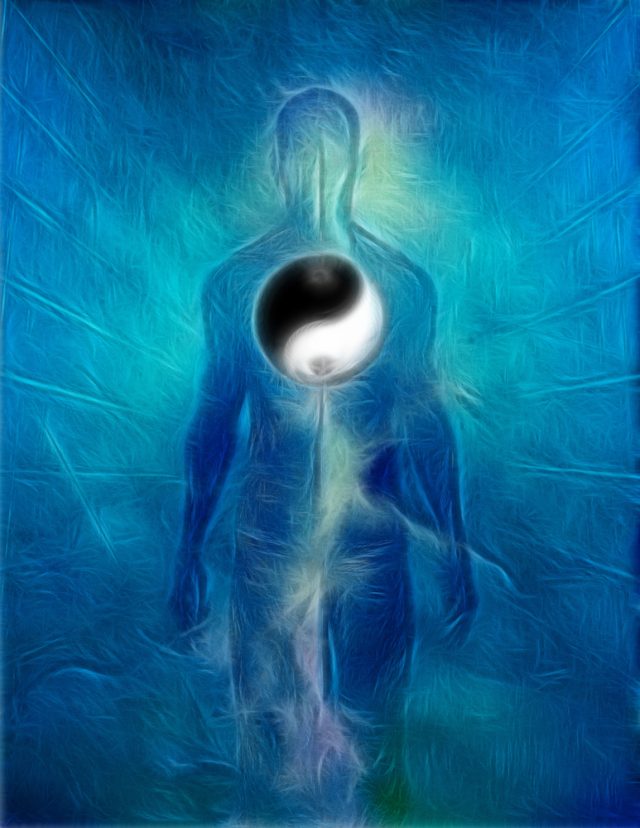 Not only do mitochondria serve as the powerhouse of the cell, but they also play a remarkable role in both health and disease. The balance of mitochondrial function is imperative for sustaining cellular energy production and managing cellular stress. Mitochondrial dysfunction has been linked to a variety of disease states, including metabolic disorders, neurodegenerative diseases, and the process of aging. Understanding the role of mitochondrial function and cellular health can provide insight into potential therapeutic interventions and lifestyle changes to promote overall well-being.
Not only do mitochondria serve as the powerhouse of the cell, but they also play a remarkable role in both health and disease. The balance of mitochondrial function is imperative for sustaining cellular energy production and managing cellular stress. Mitochondrial dysfunction has been linked to a variety of disease states, including metabolic disorders, neurodegenerative diseases, and the process of aging. Understanding the role of mitochondrial function and cellular health can provide insight into potential therapeutic interventions and lifestyle changes to promote overall well-being.
The Role of Mitochondria in Aging
Among the numerous factors contributing to the aging process, the decline in mitochondrial function stands out as particularly significant. As individuals age, mitochondrial DNA accumulates mutations, leading to impaired energy production. This decline in mitochondrial efficiency is believed to contribute to the overall deterioration of cellular functions and an increase in oxidative stress, which can exacerbate age-related diseases.
Moreover, studies suggest that enhancing mitochondrial biogenesis and reducing oxidative damage through dietary interventions and physical activity may bolster mitochondrial health and promote longevity. Thus, fostering mitochondrial vitality is becoming increasingly recognized as a vital strategy in the quest for healthy aging.
Mitochondria and Metabolic Disorders
Aging is often accompanied by metabolic disorders such as obesity and type 2 diabetes, conditions that are significantly influenced by mitochondrial dysfunction. These disorders arise when cells can no longer efficiently utilize nutrients for energy, leading to increased fat storage and inflammation. Mitochondria are critical in regulating metabolic pathways, and their impairment can disrupt insulin signaling and energy expenditure.
Disease outcomes, particularly in metabolic conditions, frequently reflect the health of mitochondrial networks within cells. Addressing mitochondrial dysfunction through lifestyle modifications, such as caloric restriction or exercise, has shown promise in improving metabolic health and potentially reducing the risk of associated diseases.
Mitochondrial Contributions to Neurodegenerative Diseases
Disorders of the nervous system, including Alzheimer’s, Parkinson’s, and Huntington’s diseases, have been linked to mitochondrial dysfunction. Mitochondria are not only responsible for energy production but also play a role in maintaining neuronal health. When mitochondrial function deteriorates, it can lead to increased neuronal damage through oxidative stress and apoptosis, further exacerbating neurodegenerative processes.
Moreover, emerging research suggests that enhancing mitochondrial dynamics may offer therapeutic possibilities for neurodegenerative diseases. By promoting mitochondrial energy production and reducing oxidative damage, scientists hope to develop strategies that could potentially slow down or even reverse neuronal degeneration.
To summarize, he/she/they should understand that mitochondrial health is intertwined with numerous health outcomes, particularly regarding aging and metabolic and neurodegenerative disorders. Focus on maintaining and improving mitochondrial function may contribute to better health and longevity, highlighting the importance of ongoing research in this dynamic field.
Future Research and Implications
Your understanding of mitochondria, the energy powerhouses of the cell, can lead to many fascinating insights into their functions and roles in health and disease. Researchers are continually uncovering the complexities of these organelles, searching for ways to harness their potential for therapeutic advancements. For further information on the functions and importance of mitochondria, he or she may refer to Mitochondria – cell powerhouses.
Current Trends in Mitochondrial Research
Across various fields of biology and medicine, the research surrounding mitochondria is gaining momentum. Scientists are investigating the connection between mitochondrial dysfunction and several diseases, including neurodegenerative disorders, metabolic syndromes, and even certain cancers. Recent studies have designed innovative approaches to evaluate mitochondrial dynamics, biogenesis, and cellular energy metabolism, which can provide deeper insights into how these organelles contribute to overall cellular health.
Moreover, advancements in technologies such as single-cell RNA sequencing and advanced imaging techniques are paving the way for a more granular understanding of mitochondrial behavior. These trends indicate a shift from traditional studies to a more nuanced exploration of mitochondrial interactions within different tissues and under various physiological states, revealing potentially transformative implications for future research.
Potential Therapeutic Applications
Trends in mitochondrial research not only highlight its importance in understanding disease mechanisms but also open the door to novel therapeutic applications. Researchers are exploring several avenues for mitochondrial-targeted therapies, such as enhancing mitochondrial function to treat metabolic disorders or using mitochondrial replacement therapies for certain genetic diseases. This presents a promising landscape for developing interventions that could improve mitochondrial function and energy production, leading to better health outcomes.
Also, promising strategies include the use of compounds that can support mitochondrial biogenesis or protect against oxidative stress. These applications suggest that therapeutics aimed at fine-tuning mitochondrial function have the potential to transform the treatment of various chronic diseases, enhancing the quality of life for many individuals.
Ethical Considerations in Mitochondrial Research
Potential advancements in mitochondrial research come with important ethical considerations. As scientists probe deeper into mitochondrial manipulation, particularly in the context of mitochondrial replacement techniques, ethical debates regarding genetic modifications arise. Questions surrounding consent, the implications of germline changes, and equitable access to such treatments must be prioritized to ensure that advancements benefit a broad demographic without unintended consequences.
In fact, discussions around mitochondrial donation and its potential to prevent genetic disorders bring additional ethical challenges. It is vital for the scientific community to address these issues comprehensively, ensuring that ethical guidelines are established and adhered to while fostering innovation in mitochondrial research.
Conclusion
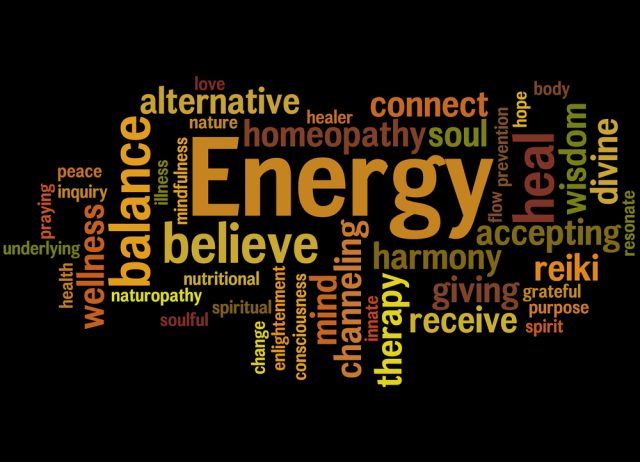 Summing up, mitochondria play an vital role in cellular energy production, serving as the powerhouses that convert nutrients into adenosine triphosphate (ATP). They are not merely structures within the cell; they are dynamic organelles that contribute to various metabolic processes. Researchers have demonstrated that the health and functionality of mitochondria are interconnected with overall cellular well-being. Consequently, understanding mitochondria’s function can illuminate the pathways to improving energy metabolism and addressing various metabolic disorders. They also participate in critical functions beyond energy production, including apoptosis, cellular signaling, and the regulation of cellular metabolism.
Summing up, mitochondria play an vital role in cellular energy production, serving as the powerhouses that convert nutrients into adenosine triphosphate (ATP). They are not merely structures within the cell; they are dynamic organelles that contribute to various metabolic processes. Researchers have demonstrated that the health and functionality of mitochondria are interconnected with overall cellular well-being. Consequently, understanding mitochondria’s function can illuminate the pathways to improving energy metabolism and addressing various metabolic disorders. They also participate in critical functions beyond energy production, including apoptosis, cellular signaling, and the regulation of cellular metabolism.
In closing, they provide more than just energy; mitochondria are integral to the very fabric of cellular operations. By exploring the intricate mechanisms of mitochondrial function, scientists can develop innovative strategies to enhance energy production, enabling advances in healthcare and preventative measures against diseases derived from mitochondrial dysfunction. Their research not only sheds light on the foundations of cellular energy but also emphasizes the profound implications of mitochondrial health for organismal vitality and longevity.
FAQ
Q: What is the primary function of mitochondria in cells?
A: Mitochondria are often referred to as the powerhouse of the cell because their main role is to generate adenosine triphosphate (ATP), which is the energy currency of the cell. They do this through a process known as oxidative phosphorylation, in which nutrients, such as glucose and fatty acids, are converted into energy in the form of ATP.
Q: How do mitochondria contribute to cellular metabolism?
A: Mitochondria play a significant role in cellular metabolism by participating in the citric acid cycle (Krebs cycle) and fatty acid oxidation. These processes enable the breakdown of carbohydrates, fats, and proteins to produce ATP. Additionally, they are involved in regulating metabolic pathways, affecting how cells utilize different energy sources based on their availability and the cell’s requirements.
Q: What other functions do mitochondria have besides energy production?
A: Aside from energy production, mitochondria are involved in various cellular processes, including the regulation of metabolic pathways, calcium storage, and control of the cell cycle and growth. They also play a role in apoptosis (programmed cell death) by releasing factors that influence cell survival and death, thereby helping maintain cellular health and function.
Q: How does mitochondrial dysfunction affect human health?
A: Mitochondrial dysfunction can lead to several health issues, as it results in decreased ATP production and an increase in oxidative stress within cells. This has been linked to a variety of conditions, including neurodegenerative diseases (such as Alzheimer’s and Parkinson’s), diabetes, and cardiovascular diseases. Understanding mitochondrial health is important for a comprehensive approach to many metabolic disorders.
Q: Can mitochondria reproduce and how does this impact cell function?
A: Yes, mitochondria can reproduce independently of the cell cycle through a process called fission and fusion. This ability allows cells to adapt to energy demands. For instance, during periods of high energy demand, mitochondria can divide to increase the number of energy-producing sites. Conversely, when energy demand is low, they can fuse to increase their efficiency, maintaining optimal cellular function.





 Biofield therapies are used to help with a variety of health conditions. These therapies aim to restore balance and health by affecting the energy fields around the body. While scientific evidence is limited, many people find these therapies helpful for managing symptoms and improving overall well-being.
Biofield therapies are used to help with a variety of health conditions. These therapies aim to restore balance and health by affecting the energy fields around the body. While scientific evidence is limited, many people find these therapies helpful for managing symptoms and improving overall well-being.





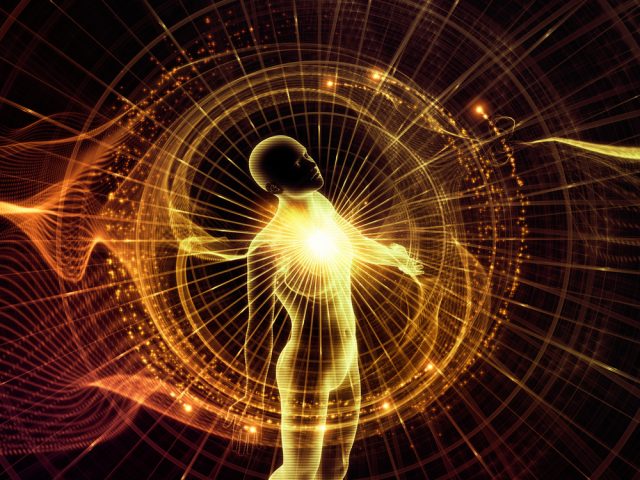 The therapy is described as an adventure in self-discovery, differing from other self-exploratory therapies by its emphasis on understanding human personality through bodily expressions. For over fifty years, Bioenergetic Therapy has aided individuals in achieving better health both physically and mentally
The therapy is described as an adventure in self-discovery, differing from other self-exploratory therapies by its emphasis on understanding human personality through bodily expressions. For over fifty years, Bioenergetic Therapy has aided individuals in achieving better health both physically and mentally  Grounding is a core principle in Bioenergetic Therapy, focusing on establishing a connection between the body and the earth. This practice aids individuals in becoming more present and aware, thereby enhancing their emotional and psychological grounding. Specific grounding exercises increase contact with the legs and feet, reducing anxiety and helping individuals to focus less on mental activities and more on bodily sensations
Grounding is a core principle in Bioenergetic Therapy, focusing on establishing a connection between the body and the earth. This practice aids individuals in becoming more present and aware, thereby enhancing their emotional and psychological grounding. Specific grounding exercises increase contact with the legs and feet, reducing anxiety and helping individuals to focus less on mental activities and more on bodily sensations 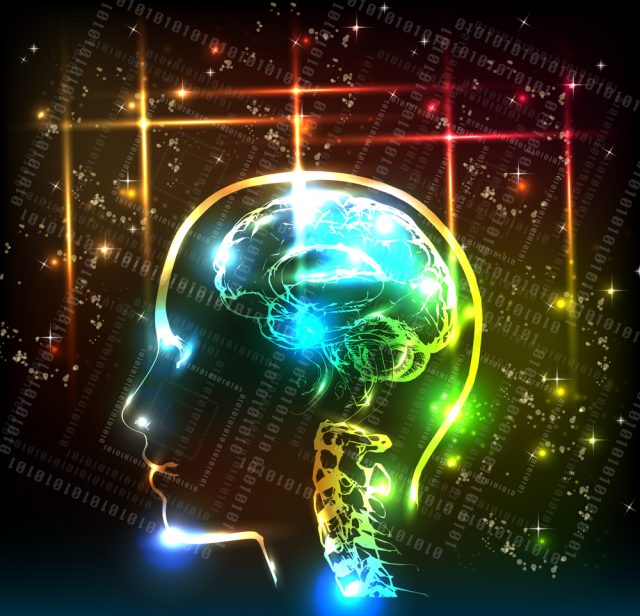 Bioenergetic therapy incorporates various techniques aimed at harmonizing the relationship between the body and the mind. These include bodywork, where physical exercises and bodywork release tension and restore the body’s vibrational state, and breathing techniques, where therapists guide clients in breathing exercises essential to bioenergetic healing. These exercises help relieve physical tension and enhance emotional release
Bioenergetic therapy incorporates various techniques aimed at harmonizing the relationship between the body and the mind. These include bodywork, where physical exercises and bodywork release tension and restore the body’s vibrational state, and breathing techniques, where therapists guide clients in breathing exercises essential to bioenergetic healing. These exercises help relieve physical tension and enhance emotional release  Bioenergetic therapy emphasizes the importance of body movements to facilitate emotional and physical release. Techniques such as standing and bending the knees are directed to heighten connection to the ground, helping individuals to feel more grounded and stable
Bioenergetic therapy emphasizes the importance of body movements to facilitate emotional and physical release. Techniques such as standing and bending the knees are directed to heighten connection to the ground, helping individuals to feel more grounded and stable  One of the key advantages of bioenergetic therapy is its effectiveness in promoting mental health. It empowers individuals to strengthen their emotional boundaries and enhance their relationships. This is achieved through training that develops a deeper understanding of how emotions manifest in the body, thus allowing for more authentic interactions and connections with others
One of the key advantages of bioenergetic therapy is its effectiveness in promoting mental health. It empowers individuals to strengthen their emotional boundaries and enhance their relationships. This is achieved through training that develops a deeper understanding of how emotions manifest in the body, thus allowing for more authentic interactions and connections with others 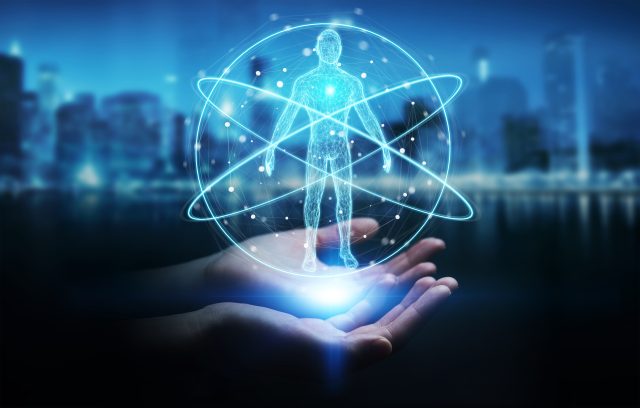 Throughout this exploration of bioenergetic therapy, we have delved into its roots, principles, and the diverse techniques that define this unique therapeutic approach. The therapy’s emphasis on the interconnectedness of physical health, emotional well-being, and psychological insight underlines its capacity to address a wide range of conditions—from trauma and chronic pain to more profound issues like anxiety and depression. By fostering an intimate understanding of the body’s language through movement, breath, and energy flow, bioenergetic therapy illuminates a path toward healing and self-discovery, grounded in the belief that the body holds key insights into our deepest selves.
Throughout this exploration of bioenergetic therapy, we have delved into its roots, principles, and the diverse techniques that define this unique therapeutic approach. The therapy’s emphasis on the interconnectedness of physical health, emotional well-being, and psychological insight underlines its capacity to address a wide range of conditions—from trauma and chronic pain to more profound issues like anxiety and depression. By fostering an intimate understanding of the body’s language through movement, breath, and energy flow, bioenergetic therapy illuminates a path toward healing and self-discovery, grounded in the belief that the body holds key insights into our deepest selves. Integrative health care is a holistic approach that emphasizes the whole person—mind, body, and spirit—in pursuit of optimal health and wellness. It combines conventional medical treatments with complementary therapies, ensuring a comprehensive,
Integrative health care is a holistic approach that emphasizes the whole person—mind, body, and spirit—in pursuit of optimal health and wellness. It combines conventional medical treatments with complementary therapies, ensuring a comprehensive, 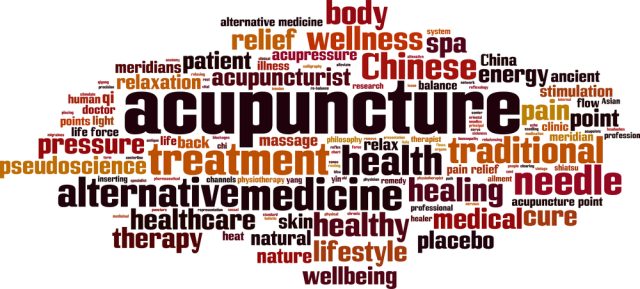 The field of integrative health care is poised for transformative innovations that promise to redefine the landscape of health and wellness. Advancements in whole healing systems and the integration of digital health technologies are expected to drive significant developments. These innovations not only aim to enhance the efficacy of treatments but also to broaden the accessibility of integrative care.
The field of integrative health care is poised for transformative innovations that promise to redefine the landscape of health and wellness. Advancements in whole healing systems and the integration of digital health technologies are expected to drive significant developments. These innovations not only aim to enhance the efficacy of treatments but also to broaden the accessibility of integrative care. concepts and principles of bioenergetics and its significance in biological systems.
concepts and principles of bioenergetics and its significance in biological systems. Vitamins are organic compounds that are crucial for sustaining life. They play a key role in metabolic processes, immune function, and cell protection. Deficiencies in vitamins can lead to severe health issues, including impaired immune response, skin disorders, and neurological damage.
Vitamins are organic compounds that are crucial for sustaining life. They play a key role in metabolic processes, immune function, and cell protection. Deficiencies in vitamins can lead to severe health issues, including impaired immune response, skin disorders, and neurological damage. Achieving optimal energy levels involves a strategic balance of macronutrients—carbohydrates, proteins, and fats. Carbohydrates should primarily come from
Achieving optimal energy levels involves a strategic balance of macronutrients—carbohydrates, proteins, and fats. Carbohydrates should primarily come from  Intermittent fasting involves alternating cycles of eating and fasting, which can influence hormonal balance and improve metabolic health. This practice has been linked to improved energy levels and may serve as an effective component of
Intermittent fasting involves alternating cycles of eating and fasting, which can influence hormonal balance and improve metabolic health. This practice has been linked to improved energy levels and may serve as an effective component of 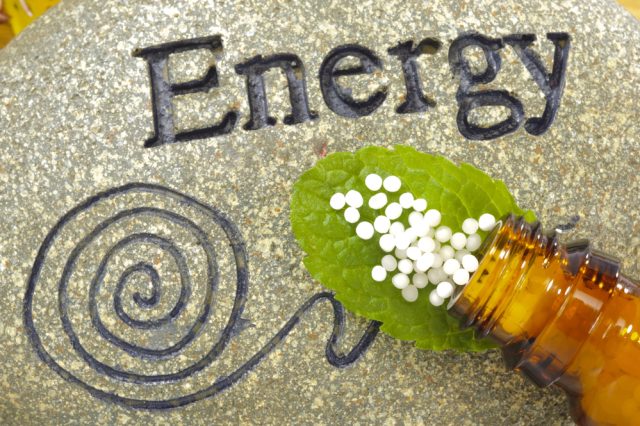 Energy medicine is a branch of alternative medicine that focuses on the belief that the body has energy fields that can be harnessed for healing and wellness. This holistic approach encompasses a variety of practices aimed at balancing these energies to improve health. The concept, while ancient, has seen a resurgence in interest due to its non-invasive nature and the growing body of anecdotal evidence supporting its efficacy. This article explores the various aspects of energy medicine, from its definitions and types to its mechanisms, applications, and the controversies it faces.
Energy medicine is a branch of alternative medicine that focuses on the belief that the body has energy fields that can be harnessed for healing and wellness. This holistic approach encompasses a variety of practices aimed at balancing these energies to improve health. The concept, while ancient, has seen a resurgence in interest due to its non-invasive nature and the growing body of anecdotal evidence supporting its efficacy. This article explores the various aspects of energy medicine, from its definitions and types to its mechanisms, applications, and the controversies it faces. These techniques are based on the traditional Chinese medicine concept of Qi, which is considered a
These techniques are based on the traditional Chinese medicine concept of Qi, which is considered a 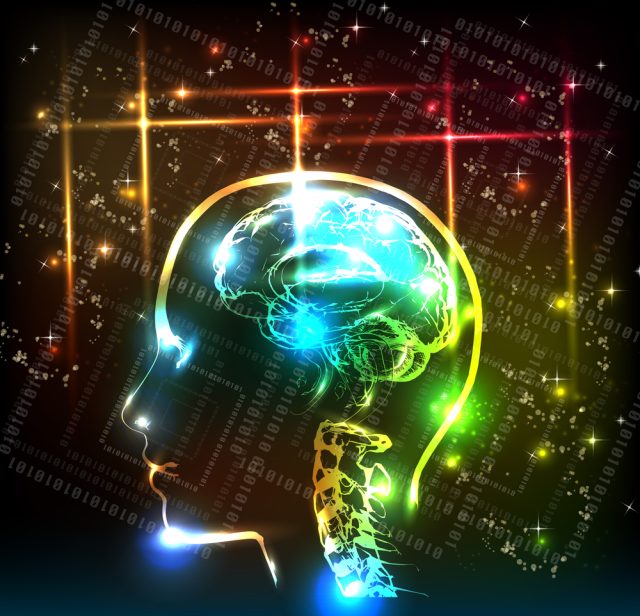 Energy medicine is increasingly being utilized as a therapeutic tool for mental health disorders, including depression and anxiety. Techniques like Healing Touch and mindfulness-based energy practices have demonstrated potential in reducing symptoms of stress and improving emotional regulation.
Energy medicine is increasingly being utilized as a therapeutic tool for mental health disorders, including depression and anxiety. Techniques like Healing Touch and mindfulness-based energy practices have demonstrated potential in reducing symptoms of stress and improving emotional regulation. The journey to becoming a certified practitioner in energy medicine involves a structured educational pathway. Prospective practitioners must complete a series of
The journey to becoming a certified practitioner in energy medicine involves a structured educational pathway. Prospective practitioners must complete a series of  The landscape of energy medicine is continually evolving, with new research areas gaining traction.
The landscape of energy medicine is continually evolving, with new research areas gaining traction.  The intricate relationship between oxidative stress and psychological well-being is increasingly recognized in bioenergetic psychology. Oxidative stress is
The intricate relationship between oxidative stress and psychological well-being is increasingly recognized in bioenergetic psychology. Oxidative stress is  The shift from a holistic understanding of the individual to a symptom-focused approach has significantly influenced the field of mental health. Bioenergetic analysis advocates for a multi-dimensional assessment, recognizing the limitations of the medical model that has dominated since the mid-20th century. This approach is informed by psychoanalytic traditions, particularly the insights provided by the Psychodynamic Diagnostic Manual, Second Edition (PDM-2), which offers a comprehensive framework for understanding personality organization.
The shift from a holistic understanding of the individual to a symptom-focused approach has significantly influenced the field of mental health. Bioenergetic analysis advocates for a multi-dimensional assessment, recognizing the limitations of the medical model that has dominated since the mid-20th century. This approach is informed by psychoanalytic traditions, particularly the insights provided by the Psychodynamic Diagnostic Manual, Second Edition (PDM-2), which offers a comprehensive framework for understanding personality organization. Empirical research into bioenergetic techniques has sought to quantify the efficacy of these methods in various psychological and physiological contexts. Studies have utilized a range of metrics, such as the Bioenergetic Health Index (BHI), to measure outcomes related to bioenergetic interventions. The BHI, for instance, has been employed to assess oxidative stress levels in human monocytes, indicating its sensitivity as a measure of physiological changes.
Empirical research into bioenergetic techniques has sought to quantify the efficacy of these methods in various psychological and physiological contexts. Studies have utilized a range of metrics, such as the Bioenergetic Health Index (BHI), to measure outcomes related to bioenergetic interventions. The BHI, for instance, has been employed to assess oxidative stress levels in human monocytes, indicating its sensitivity as a measure of physiological changes. The incorporation of bioenergetics into professional development represents a significant shift from traditional psychotherapeutic training. Professionals are now recognizing the value of a more holistic approach that includes the body’s energy dynamics as integral to psychological health. This integration is evident in the expansion of training programs that emphasize a relational approach, aligning with Object-Relations theory and fostering healthier attachment models between therapist and client.
The incorporation of bioenergetics into professional development represents a significant shift from traditional psychotherapeutic training. Professionals are now recognizing the value of a more holistic approach that includes the body’s energy dynamics as integral to psychological health. This integration is evident in the expansion of training programs that emphasize a relational approach, aligning with Object-Relations theory and fostering healthier attachment models between therapist and client. The concept of Qi energy, also known as Chi, is an integral part of Chinese philosophy and traditional medicine. It is understood as the vital life force that flows through all living beings, influencing health, vitality, and balance. The practice of cultivating and harnessing Qi has been a cornerstone of various disciplines, including Qigong, Tai Chi, and martial arts. This article delves into the multifaceted nature of Qi, exploring its foundations, pathways, and implications for health and well-being in the modern world.
The concept of Qi energy, also known as Chi, is an integral part of Chinese philosophy and traditional medicine. It is understood as the vital life force that flows through all living beings, influencing health, vitality, and balance. The practice of cultivating and harnessing Qi has been a cornerstone of various disciplines, including Qigong, Tai Chi, and martial arts. This article delves into the multifaceted nature of Qi, exploring its foundations, pathways, and implications for health and well-being in the modern world.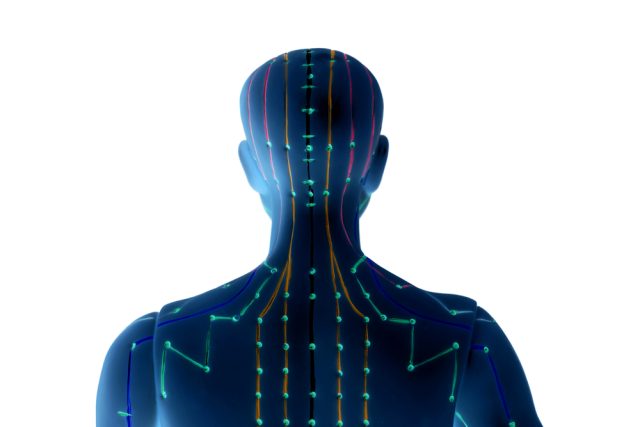 In Traditional Chinese Medicine (TCM), meridians are considered the pathways through which Qi energy flows, analogous to the circulatory system for blood. These pathways are crucial for maintaining health and are often targeted in practices such as acupuncture to correct imbalances in the body’s Qi. The proper flow of Qi along these meridians is essential for the optimal functioning of body fields and overall well-being.
In Traditional Chinese Medicine (TCM), meridians are considered the pathways through which Qi energy flows, analogous to the circulatory system for blood. These pathways are crucial for maintaining health and are often targeted in practices such as acupuncture to correct imbalances in the body’s Qi. The proper flow of Qi along these meridians is essential for the optimal functioning of body fields and overall well-being.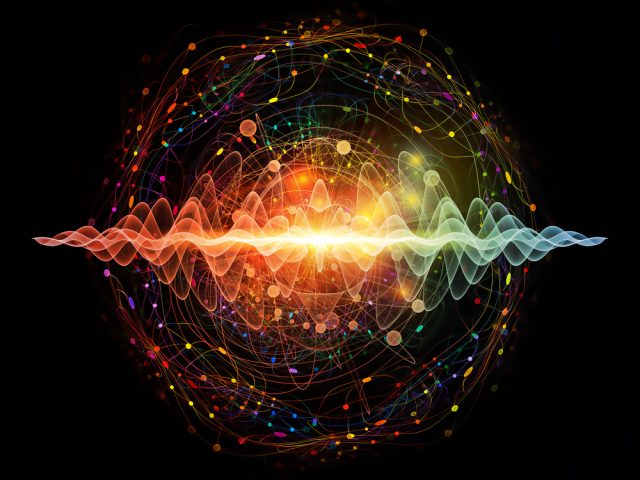 One of the most pervasive misconceptions about Qi energy is the belief that it is purely a mystical or supernatural force, detached from the physical realm. This view overlooks the intricate connection between Qi and the tangible aspects of health and bodily functions. Qi is often described in metaphorical terms, which can lead to misunderstandings about its practical applications in health and wellness.
One of the most pervasive misconceptions about Qi energy is the belief that it is purely a mystical or supernatural force, detached from the physical realm. This view overlooks the intricate connection between Qi and the tangible aspects of health and bodily functions. Qi is often described in metaphorical terms, which can lead to misunderstandings about its practical applications in health and wellness.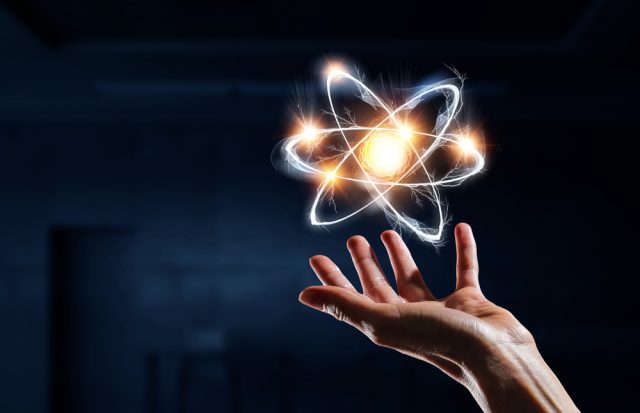 The exploration of Qi energy in the context of energy medicine is opening new avenues for therapeutic applications. The dynamic nature of Qi, as understood in traditional Chinese medicine, suggests a vast potential for integration into modern healing practices.
The exploration of Qi energy in the context of energy medicine is opening new avenues for therapeutic applications. The dynamic nature of Qi, as understood in traditional Chinese medicine, suggests a vast potential for integration into modern healing practices.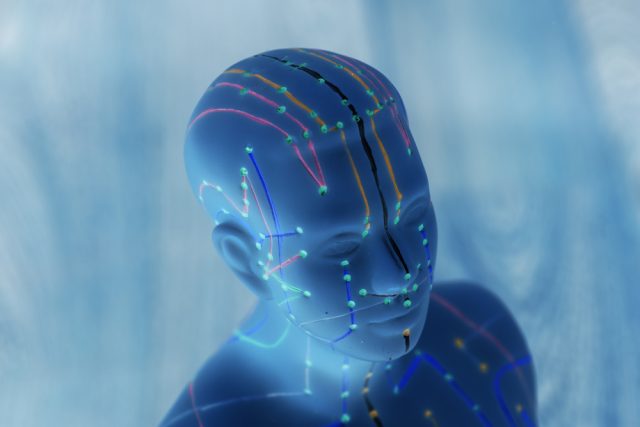 Key Takeaways
Key Takeaways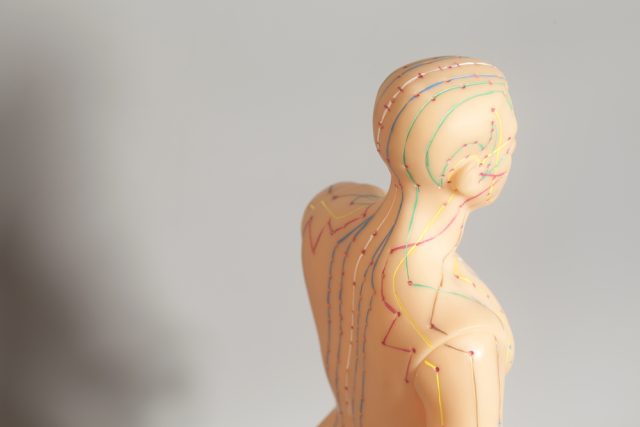 Anatomy of the Meridian System
Anatomy of the Meridian System The human energy body is intricately linked to emotional well-being, with stress acting as a significant disruptor of energy flow. A harmonious energy flow is key to reducing stress and boosting mood, which in turn can positively impact physical health and
The human energy body is intricately linked to emotional well-being, with stress acting as a significant disruptor of energy flow. A harmonious energy flow is key to reducing stress and boosting mood, which in turn can positively impact physical health and 